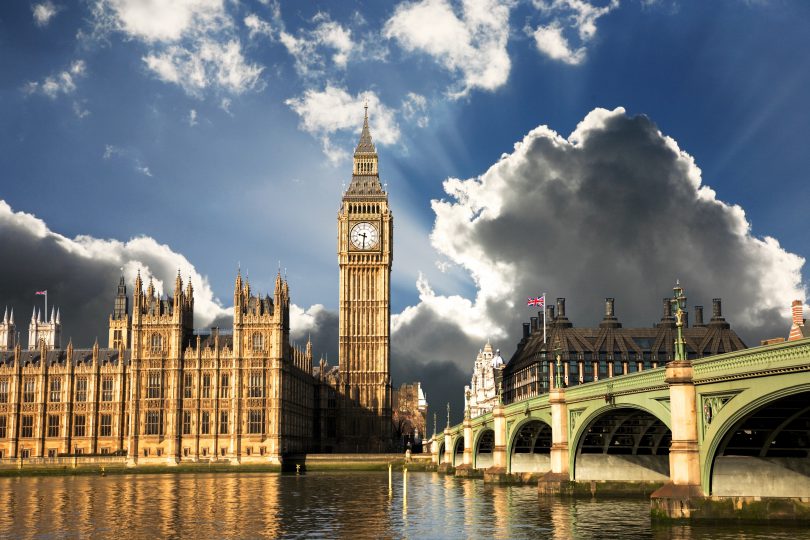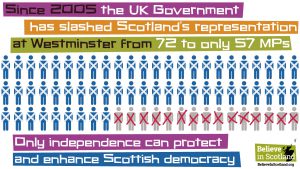Anger is spreading at plans unveiled yesterday to radically change Westminster Scottish constituency borders and cut the number of Scotland’s MPS while increasing the number in England.
The cut in the number of Scottish MPs by two — from 59 to 57 — and an increase the number of English MPs by 10 has taken Scottish representation at Westminster down to its lowest level for more than 100 years, according to research by the House of Commons library.
Other complaints concern the effect of the new boundaries on individual constituencies which often seem to make no sense.
Here are just some of the questions thrown up by the Boundary Commission proposals;
1: Scotland already suffers from a democratic deficit at Westminster. Do the changes do anything to redress the balance?
No. They makes it worse. According to an analysis from the House of Commons Library the cut in the number of Scottish MPs and the rise in the number of those representing England would reduce Scottish representation down to just 8.8%.
That is the lowest level since at least 1918 — when women over the age of 30 (with a property quota) were allowed to vote for the first time, as well as all men over the age of 21.
The past century has also seen a drop of a quarter from a peak of 74 Scottish MPs. That gave Scotland 10.5% representation between 1918 and 1922, when there was a total of 707 UK seats. The total number of UK seats dropped to 615 between 1922 and 1945 although the number of Scottish MPs remained at 74, meaning Scottish representation rose to 12%
When the number of Scottish MPs was slashed in 2005 to 59, Scottish representation dropped to just 9.1%
The number of Scottish MPs was reduced in 1950 to 71 seats and the total number of Westminster seats rose to 630, which meant Scottish representation dropped to 11.3%.
The number of Scottish MPs rose by one to 72 in 1983 and the total number of MPs increased to 650. Scottish representation at that point was 11.1%.
When the number of Scottish MPs was slashed in 2005 to 59, Scottish representation dropped to just 9.1% of a total of 656 MPs. That was a cut of almost a fifth of Scottish MPs and saw the loss of 13 Scottish seats.
The latest plans would give Scotland 57 MPs of a total of 650, a representation off just 8.8%.
What would be the likely effect of the proposed boundary changes on party seats in Scotland.
It is impossible to be certain but Ballot Box Scotland has posted on twitter (@BallotBoxScot) that the most likely effect had the proposals been in effect during the 2019 general election would have been a change in the number of LibDem MPs elected in Scotland, down from four to two.
So how are the Tories reacting in Scotland?
The Conservative leader in Scotland isn’t known for breaking ranks. For instance, when his London bosses pushed ahead with plans to cut £20 a week from universal credit Douglas Ross uttered not a word of protest.
He has said, however, that he will not support plans to ‘’carve up’’ his Moray constituency among three constituencies – Highland East and Elgin, Banff and Buchan and Gordon and Moray South.
Mr Ross had already said he would not contest the Moray seat at the next UK general election – he also sits in the Scottish parliament. But he said the latest plans would mean historic local links would be lost and Moray’s identity diluted.
It’s not clear why a reduction of two seats should involve such significant changes to so many Scottish constituencies
Why are these changes being suggested anyway?
The official reason is that the electoral map needs updated at various times to reflect population changes. The aim of the changes is to make sure all constituencies have as equal a number of voters as possible. The number of voters in each should be between 69,724 and 77,062. It’s not clear, though, why a reduction of two seats should involve such significant changes to so many Scottish constituencies.
What are the most unpopular changes?
Bewildered reactions to the proposals are continuing to be expressed through social media. Many are unpopular. The proposed changes in Glasgow, for example, have left many scratching their heads. The proposed new Glasgow Central constituency includes Govanhill and Robroyston but not Glasgow Central Station.












Westminster riding roughshod over Scotland and Wales in order to have a majority in order to pass bills they know will fail otherwise. It’s shocking they should be able to get away with it. The beginnings of a Fascist regime especially when the media supports them.